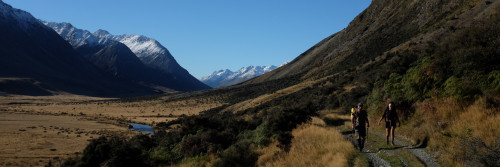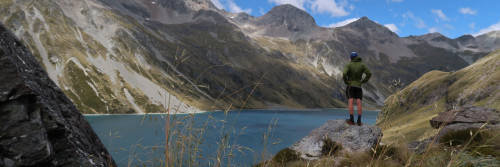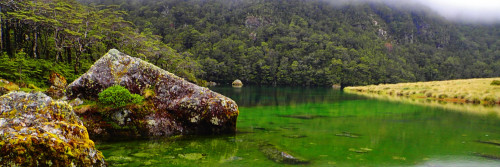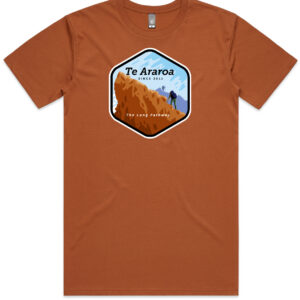News and media
Preparing for your 2021-2022 Te Araroa journey – COVID-19 Alert Levels FAQ
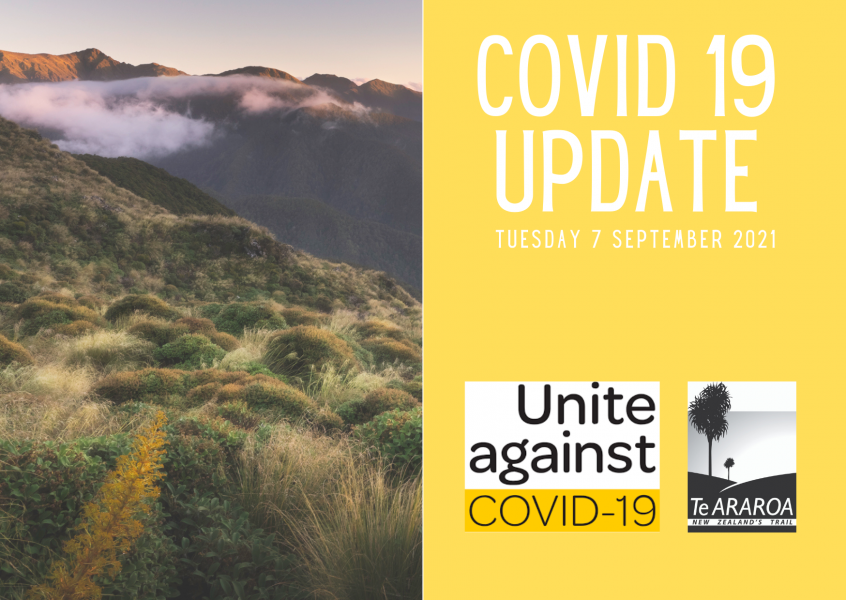
The days are getting warmer and longer, which usually means one thing: it’s coming to the start of the walking season.
While many of you are getting ready to start your Te Araroa adventure, we understand the current COVID-19 situation has added an extra layer of uncertainty to your plans.
So, we’ve put together this helpful FAQ to help you plan your walk.
Frequently asked questions (updated 22 September 2021):
At what COVID-19 Alert Level can I do multi-day tramps on Te Araroa?
Government restrictions to prevent the spread of the virus mean overnight tramping on sections of Te Araroa trail is only possible at COVID-19 Alert Level 2 or Alert Level 1.
The New Zealand Government changed the COVID-19 restrictions for areas of New Zealand outside of Auckland to Alert Level 2 at 11.59pm on 7 September 2021. However, Auckland is staying at a higher alert level for a while longer.
Border restrictions currently in place mean that international walkers are unfortunately highly unlikely to be able to walk Te Araroa over the 2021-2022 summer. Once again, the vast majority of walkers this year are likely to be New Zealanders.
I’m planning to start my thru-walk at Cape Reinga. When can I start and how do I get there?
Many people who choose to walk the full length of Te Araroa trail begin their journey at Cape Reinga in October or November and pass through Auckland a few weeks later.
However, right now Auckland is still at COVID-19 Alert Level 3, meaning travel through the region on foot as part of your Te Araroa journey is not possible. While we are hopeful that the outbreak will be under control by the time people wish to start their hike, we sadly can’t guarantee that people will be able to walk the Auckland section in the weeks ahead.
Transiting through Auckland to reach Cape Reinga to begin your journey also poses significant challenges while the Auckland region is at Alert Level 3 – many of these challenges will remain until the region drops to Alert Level 2 or less.
At Alert Levels 3 and above, buses transiting through the Auckland region are not operating. The Government has also announced that driving through Auckland in a private vehicle to go from one Alert Level 2 region to another is not permitted for tourism or holiday purposes.
Travel between areas south of the Auckland border and Northland for holiday or tourism purposes is possible on a flight, but only if that flight is direct and doesn’t stop off in Auckland on the way. At present, we are aware of one Air New Zealand service – Wellington to Kerikeri – that flies direct without stopping in Auckland. It is possible that more direct flights will be announced in future.
As you can see, the current elevated Alert Level settings in Auckland do create some uncertainty for Te Araroa walkers. If you are planning to start your walk from Cape Reinga in the near future, you may wish to consider other options, such as starting in a different region.
When can I walk through the Auckland section of the trail on a thru-walk?
Travelling through Auckland can only happen when the region moves to Alert Level 2 or Alert Level 1.
At Alert Levels 3 and above, Department of Conservation (DOC) huts and campsites are closed, and back country tramping is off limits. Transiting through the region on foot is not permitted.
If I decide not to start my walk in Cape Reinga, can I start at Bluff instead?
You can walk Te Araroa in either direction. Most people usually start at Cape Reinga in October or November so that they can walk most of the South Island during the best summer weather. This means they’re most likely to avoid snow, snowmelt, and the Southland lambing closures.
However, it is fine to start at Bluff. If you choose to do so in October, just be aware that you need to account for closed tracks for the lambing season, which occur until around November. You may also encounter some more difficult weather and colder temperatures.
Check out our northbound (NOBO) trail notes for more details.
Are there any other options?
If you plan to begin your walk soon, you could start from the south of Auckland. If time and budget allow, you may then want to walk the Auckland and Northland section later on, when Auckland is at Alert Level 2 or below.
If you aren’t wedded to the idea of doing the trail in one continuous walk, there are some other more creative options. These include doing the South Island from north to south before flying to Wellington to begin the remainder of the journey up the North Island. However, please keep in mind that the Queen Charlotte Track at the top of the South Island is currently closed due to recent storm damage – possibly until October or November while DOC undertakes repairs – so walkers will need to keep an eye on our Alerts and Trail Status page for updates.
Alternatively, you could do the North Island from south to north before heading to the South Island and beginning the journey from Picton to Bluff.
What happens if Alert Levels change when I’m walking?
If the whole country moves to Alert Levels 4 or 3, you must travel home as soon as possible. If the region moves to Alert Levels 4 or 3, you must move to an Alert Level 2 region as soon as possible.
The time limit is usually 48 hours, but if you don’t find out about the change because you are somewhere without signal for a long time, or you are in a remote place which would take a long time to get out of, then you should return to civilisation and return home or to a region that is not in Alert Level 4 or 3 when you can.
Keep in mind that isolating for a period of time in a DOC hut or campsite is not permitted at Alert Levels 4 or 3.
I’m planning to hitchhike some of the trail's road sections. At which Alert Levels are you allowed to hitchhike?
You can only hitchhike at Alert Levels 1 and 2. If you decide to hitchhike in a region that is at Alert Level 2, remember that wearing a mask is recommended.
>> Do you have any other questions about New Zealand’s Alert Levels and what they mean for your Te Araroa journey? Send us your questions and we will do our best to answer them - please feel to email mark@teararoa.org.nz
